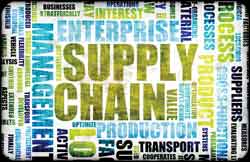Radio Frequency Identification in Packaging: Part 2
PACKAGING
 The concept of shared value can help those in the consumer packaged goods (CPG) industry realize the potential of radio frequency identification (RFID). In this concept, costs and benefits are defined at each step of the value chain. This process enables balanced costs and competitive advantages and aligns well with the CPG industry’s focus on consumers. While RFID addresses product transfer for improved efficiency, the value chain focuses on the value of what is transferred. The concept emphasizes the addition of value and connects members of the supply chain for competitive advantage.
The concept of shared value can help those in the consumer packaged goods (CPG) industry realize the potential of radio frequency identification (RFID). In this concept, costs and benefits are defined at each step of the value chain. This process enables balanced costs and competitive advantages and aligns well with the CPG industry’s focus on consumers. While RFID addresses product transfer for improved efficiency, the value chain focuses on the value of what is transferred. The concept emphasizes the addition of value and connects members of the supply chain for competitive advantage.
RFID has been used successfully for tracking and tracing. The envisaged value of RFID is evolving from its initial focus on cost savings by one supply chain entity into a broad application throughout the value chain. Consumers determine the value in a chain that extends from raw package materials to consumer purchase. At each link in the supply chain, products gain value to generate a competitive advantage and drive consumer preference. RFID can enable a knowledge flow between supply chain entities to better meet consumer needs and increase product value. The CPG industry faces a staggering array of issues that RFID is poised to address: Two areas, sustainability and safety, offer viable opportunities because of their shared value.
Sustainability
Waste from products that never reach consumers is an economic loss to the entire supply chain. And reducing the amount of food that is never consumed offers an opportunity to address consumers’ concerns about sustainability. RFID can optimize resources invested in products and packaging.
RFID tags assist in providing product information to reduce waste and increase package recycling. Implementation of RFID tags benefits the entire supply chain from package material suppliers to the post-consumer environment. Incentivizing consumers to use RFID can be achieved by designing programs to get more people involved in recycling. Moreover, RFID tags can track packages recycled, provide consumers with a reduction in trash pickup, and translate the benefits of RFID to the consumer.
--- PAGE BREAK ---
Safety
RFID can add value to the consumer product experience by transmitting information on product shelf life. RFID tags are used to track supplies, monitor expiration dates of critical inventory, and improve invoicing of supplies and consumables. Building trust in product and package safety adds value to the consumer experience. Consumer trust is easily eroded by the presence of counterfeit products and packages. By enabling a chain of custody to ensure that products and package materials are not counterfeit, RFID tags can increase consumer trust and enable a sustainable competitive advantage for products that use RFID.
The shared value concept can recapture profits lost due to counterfeiting. Addressing the volume of counterfeit products and packaging allows for a more efficient supply chain, incentivizing all entities to employ RFID. Through the development of a structure to share benefits, costs become balanced through the supply chain. Restoring consumer trust in a brand increases brand equity for CPG companies, package material suppliers, and retailers.
 Shared Value Benefits
Shared Value Benefits
Using a value chain-oriented process allows for benefits and costs to be balanced and broadened and for value to be shared by consumers. With this understanding, RFID can align to meet consumer needs and be driven by its societal and consumer benefits. When packaging suppliers place RFID tags on stock before sending material to CPG companies, the tags contain manufacturing and regulatory data and other information that aids in subsequent recycling and tracking. The use of RFID is projected to decrease supplier picking and shipping errors by 90%.
At CPG companies, RFID monitors and controls inventory, ensuring that package materials are at their optimal condition. During packaging, information is added to RFID tags to track product nutrition, formulations, and food-safety information related to shelf life and distribution. In addition, package component information is added to aid in both regulatory and recycling tracking. In distribution, information on storage, locations, and conditions are added. RFID can achieve efficiencies through more knowledge and accurate product flow. Distributors thus have incentives to implement RFID. At retail, RFID can provide information on shelf life, out of code product, out of stock merchandise, and employee theft; identify counterfeit products/packages; and facilitate product orders. RFID retail tracking also aids in sustainability and safety by reducing product and package waste.
Within consumer homes, RFID guides safe use of product for storage, recipes, and shelf life and enables a rapid assessment of ingredients on hand, generating shopping lists and reducing product waste. Consumer recycling of packaging can be integrated into existing curbside and urban systems. Trash/recycling is scanned upon pickup for recyclables. Data for the amount of packaging purchased versus amount of packaging recycled can be generated by community. This information can be used to track recycling rates more accurately. At the recycler, sorting by RFID according to package type is made easier and requires less labor than the current sorting process.
--- PAGE BREAK ---
Shared Cost of RFID
RFID is cost-prohibitive because of imbalanced cost distribution rather than the cost of RFID tags. In the CPG industry, edicts have forced consumer products companies to absorb the cost of RFID tags with little benefit. Although CPG companies could save money by implementing RFID, these savings are not optimized when RFID is used only to meet retailers’ needs in the slap-and-ship fashion commonly used. Focusing on consumer drivers instead of a specific supply chain interface spreads the benefits to all value chain members. The poor implementation of RFID technology is one result of relying predominantly on CPG companies to bear the cost of RFID. An entity within the middle of the supply chain cannot viably shoulder the cost of RFID.
There are two viable alternatives to this situation. In the first scenario, one supply chain member adopts the technology for application by the entire value chain. If the base of the value chain is packaging suppliers or converters and RFID benefits were realized through the entire value chain as opposed to starting in the middle of the supply chain (where the impact of RFID cannot entirely transfer adequately to consumers), success would be more probable. This is because packaging converters would initiate the CPG supply chain and are uniquely positioned to implant RFID tags.
In the second scenario, cost savings gained by each entity would be linked to RFID costs. Assessment of the benefits gained by each supply chain entity would fund RFID. The incentive to make gains from RFID would be offset by the knowledge that the increased savings will be offset by increased cost for RFID tags. Of course, in this scenario the task of equitably assessing which entity saves what within each complex supply chain could overwhelm the supply chain and delay RFID implementation.
Consumer and societal needs for safety and sustainability transcend all categories that consume packaging. Thus, RFID implementation represents a large step as opposed to incremental innovation. The ability and alignment necessary to implement RFID effectively requires tactical knowledge to be gained between organizations. Suppliers that can enable the benefit to become a reality have a competitive advantage over others. Purchasing decisions, which are often governed by cost, would be based on savings associated with RFID and thus easier to make.
RFID is singularly qualified to address consumer and societal needs. The shared value concept stretches the value chain and can be employed to enable expansive RFID implementation. Shared responsibility would allow all value chain members to align to meet consumer and societal needs.
 Aaron L. Brody, Ph.D., CFS, Contributing Editor is President and CEO, Packaging Brody Inc., Duluth Ga., and Adjunct Professor, Univ. of Georgia ([email protected]). Fatin Sabbagha is a graduate student at Michigan State Univ., East Lansing, Mich. ([email protected]). Clare Koelsch Sand, Ph.D., is Owner, Packaging Technology and Research, Stillwater, Minn. ([email protected]).
Aaron L. Brody, Ph.D., CFS, Contributing Editor is President and CEO, Packaging Brody Inc., Duluth Ga., and Adjunct Professor, Univ. of Georgia ([email protected]). Fatin Sabbagha is a graduate student at Michigan State Univ., East Lansing, Mich. ([email protected]). Clare Koelsch Sand, Ph.D., is Owner, Packaging Technology and Research, Stillwater, Minn. ([email protected]).
